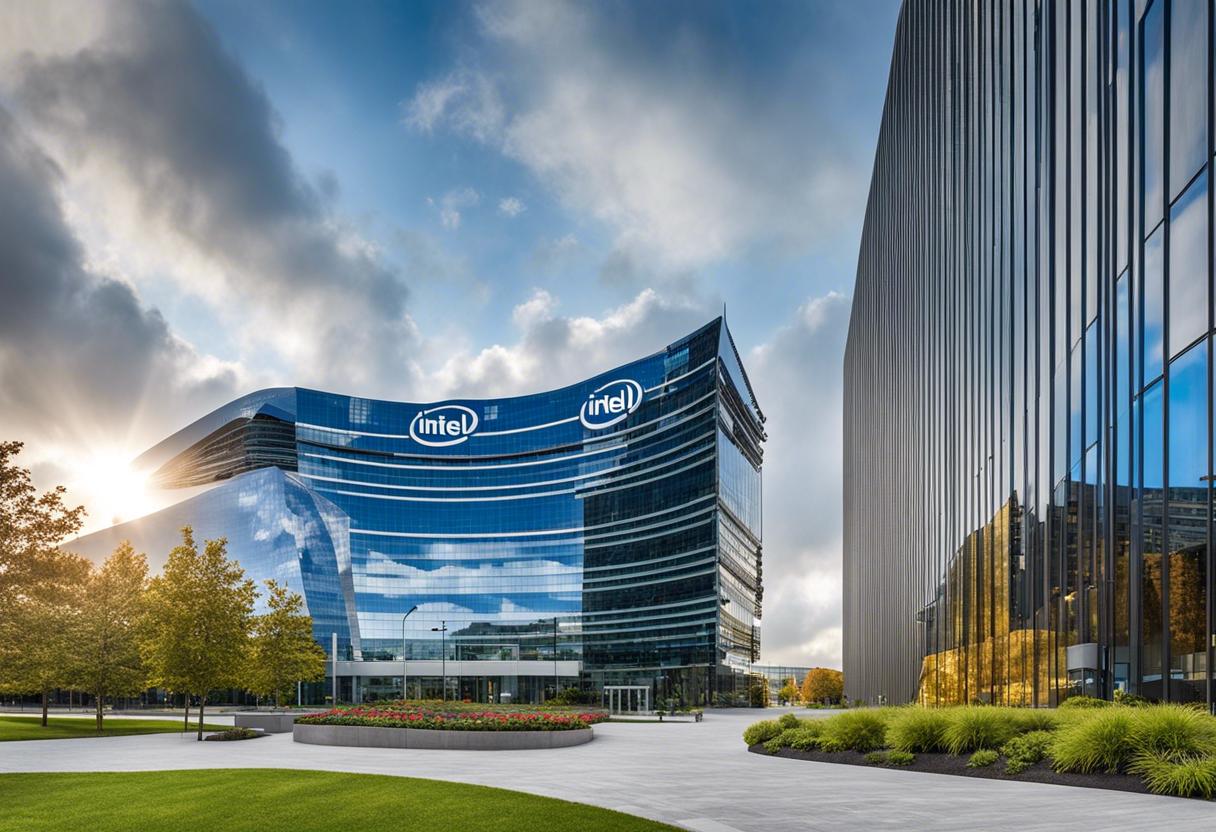The US tech titan, Intel, popular for computer semiconductors and employing approximately 6,500 individuals in the Republic, has progressively lost its previously impressive standing in the past decades. The growing excitement around AI chips, constructed by Nvidia and Advanced Micro Devices (AMD), has hastened this decline, particularly in the last year and a half.
However, on Tuesday night it was revealed that Intel had entered into an agreement to relinquish a 49% share of its newly established Fab 34 manufacturing building in Leixlip, Co Kildare. The stake was sold for $11 billion (€10 billion) to the US private equity behemoth Apollo, providing the necessary funds to propel Intel’s recuperation.
While they still reign as the principal producer of central processing units (CPUs) in the US, Intel’s primary interest lies in the PC and laptop market, which has been shrinking for a while. Their attempt to infiltrate the smartphone chip design sector was abandoned eight years prior, and they have since struggled to compete in the AI chip market, predominantly directed by Nvidia.
Four years ago, Intel’s market value was superior to Nvidia’s, but shares in the former have since plunged by more than 50%, reducing its equity capitalisation to below $128 billion (€118 billion). In contrast, its Santa Clara-based competitor, situated in the core of Silicon Valley, saw market value skyrocket 13-fold to $2.86 trillion. Tech heavyweights including Meta, Microsoft, and Nvidia have been snapping up the AI chips.
To add salt to the wound, Intel’s long-time competitor in the PC industry, AMD, now stands at twice Intel’s market value. This has been boosted by the prominence it has gained in the booming market for AI chips for data centres.
However, Intel CEO, Pat Gelsinger, announced at the Computex convention, a significant global tech trade event, that Intel is preparing to retaliate. He revealed that cost reductions would be made to products from its own AI accelerator chip initiative, Gaudi, which until recently has lagged behind. Additionally, Gelsinger introduced the Xeon 6 processor, a new AI chip specifically designed for data centres.
Gelsinger’s recovery strategy, which he has been putting into practice over the past years, aims to significantly increase Intel’s presence within the contract manufacturing market for chips made by other firms. This contrasts Intel from chip designers like Nvidia and AMD, as they not only create but also produce semiconductors.
The objective is to recapture the manufacturing market portions that have been allotted to companies such as Taiwan Semiconductor Manufacturing Company and Samsung over the recent decades.
Subsidies for chips which are offered across both the Atlantic, by the US and the EU, are amplifying this revival. The effort to minimize reliance on Asian imports for essential tech parts cites a range of motivations.
The nearly finished Fab 34 state-of-the-art high-volume manufacturing facility located in Leixlip, which has thus far cost Intel $18.4 billion, along with mega projects under way in the US and Magdeburg, Germany, are crucial to this strategy.
Last year, Intel’s contract manufacturing or foundry division recorded a loss of $7 billion, an increase from roughly $5 billion annually in the preceding two years.
The agreement with Apollo in Ireland, which came after Intel sold 49 per cent of its chip factory in Arizona to Canada’s Brookfield Infrastructure Partners, provides the American behemoth with further financial latitude and maintains its credit ratings while it pursues competitors who have advanced in AI chips and manufacturing.
It also secures around 6,500 jobs in Co Kildare, including those at Intel’s Fab 24 facility, which will continue to be fully owned by the tech corporation.

